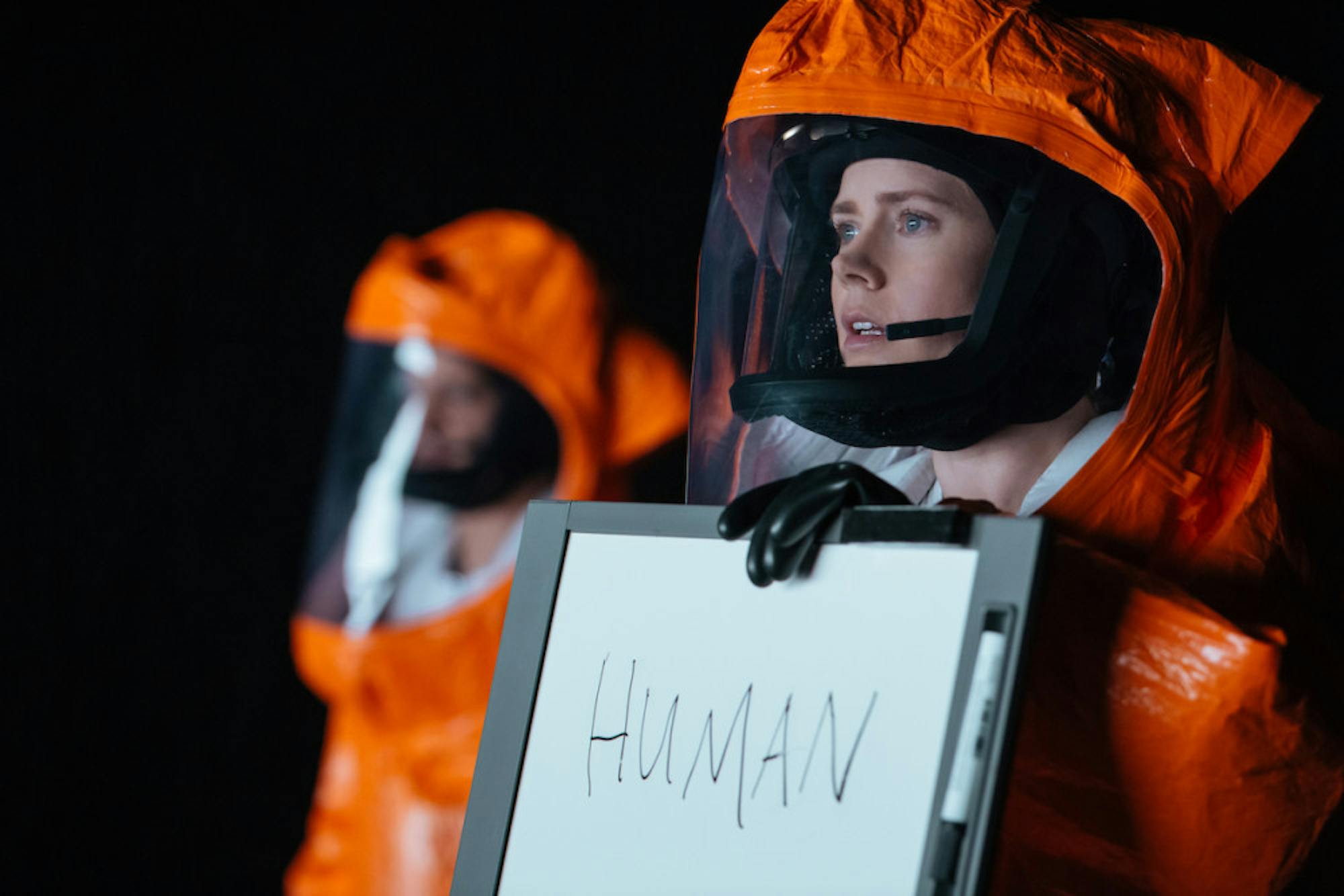Most modern science fiction works don't portray human-alien interaction well. An example of this is 2012’s "Prometheus," which had a nightmare of a plot that was simply an accessory to over-the-top visual effects. These kinds of movies hit you over the head with the fact that, surprise, there are aliens, and then they fall apart after trying to bring aliens and humanity together. Thankfully, "Arrival," released nationwide on Nov. 11, does not fall into this category.
The movie follows Amy Adams as linguist Louise Banks, who is recruited to try and communicate with mysterious aliens who arrive on Earth in vehicles called Shells. Twelve Shells touch down across the world, setting off global pandemonium, and as Louise races to bridge the two species, she begins to uncover something bigger than she ever imagined.
Although "Arrival" is led by solid performances from Adams and Jeremy Renner as theoretical astrophysicist Ian Donnelly, its real beauty lies in its ability to weave together an incredibly complex narrative using music, dialogue and visuals all at the same time. Not only does it successfully feature alien-human interaction without sacrificing plot, but the film becomes something much more than a simple story about extraterrestrial visitors. Every detail presented in the movie has a purpose — from the opening scene, in which Louise remembers her daughter’s birth and death, to the very last scene, there is not a single moment without meaning. Remarkably, there is little dialogue until about 30 minutes into the movie, yet this works not as a hindrance but as a strength. The plot is well-thought-out to the point that unnecessary detail is purged, but instead of revealing a bare-bones film, the result is a rich and immersive experience. The music fades into the background but then crescendoes into spine-tingling moments for amazing effect. The CGI and effects are realistic but not over the top, and they bring the story to life. Adams and Renner work well together, connecting in a way that feels very real.
Furthermore, the human condition is featured in a beautiful and meaningful way. Everything from the initial global response after the aliens land to the characters' reactions upon seeing unfathomably alien visitors bolster audience empathy with the characters and enhance the overall experience. One will find themselves on the edge of their seat for no reason other than a desperate need to figure out the movie and watch the characters fight to survive as tensions boil to a fever pitch. The aliens themselves are also remarkably original, feeling like true extraterrestrials instead of little green men.
However, the film’s high point does not come until the ending credits — only as one looks back does one realize how every piece of the film fits together, and the result is a paradigm shift mirroring Louise’s ultimate understanding of the alien visitors. This movie is immersive without thrusting the viewer into the character’s shoes, and the impact of the film continues hours after the final credits roll.
If there is a negative aspect of "Arrival," it is that the movie reaches a bit too far. For the most part, this is not a problem, but for its core ideas to work, a suspension of disbelief is required. Unfortunately, "Arrival" also falters at its most emotional moments. The film falls back on cringeworthy clichés, signaling a failure of the movie’s writers at some of the most critical and intimate points.
In the end, though, the positives far outweigh the negatives. "Arrival" is a breath of fresh air that contributes every fiber of its being to a deeper understanding of an ultimate message. It is close to a masterpiece, and audiences will surely welcome a science fiction movie that has them questioning everything.
The 'Arrival' of a successful human-alien contact sci-fi

Summary
4 Stars





